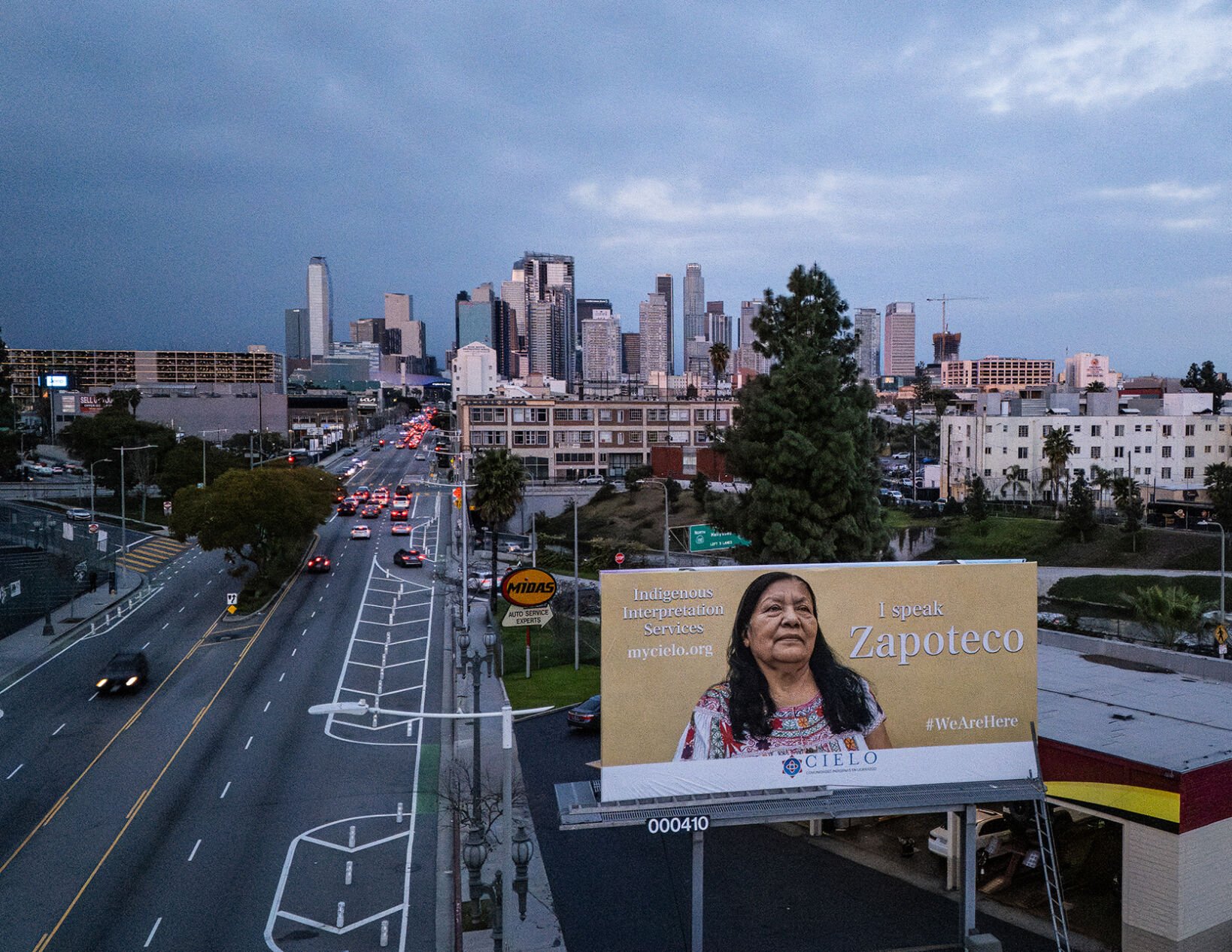
CIELO hopes that the increased visibility of these billboards will reflect on the visibility of the local Indigenous migrant communities. Photo courtesy of CIELO
If you drive through some of Los Angeles's most well-traveled streets, such as Crenshaw Avenue, Figueroa Street, Adams Boulevard, Vermont Avenue or Slauson, you will be able to see billboards of a first-of-its-kind campaign intended to amplify the voices of the local Indigenous migrant communities.
Although Indigenous migrants have been a part of the history of Los Angeles since its founding, they continue to be unaccounted for, both at the state and city levels. No real data exists on the number of indigenous people living in the communities of L.A. or their unique cultural practices and beliefs. This often creates barriers and isolates them from civic engagement, public and private resources and human rights.
“Having access to these services is a fundamental human right – a right that many Indigenous migrants continue to go without,” said Odilia Romero, co-founder and executive director of Comunidades Indigenas en liderazgo (CIELO), an Indigenous women-led non-profit organization that works jointly with Indigenous migrant people living in various areas of L.A.
In efforts to amplify the voices and offer visibility to the hundreds of local Indigenous migrant communities, CIELO recently unveiled eight billboards, each featuring a photo of an individual from an Indigenous migrant community in Los Angeles, alongside text showing the native language that they speak.
CIELO co-founder and vice executive director, Janet Martinez, said the billboard campaign aims to incentivize conversations about the Latino label and who gets placed under the label, as it oftentimes erases the linguistic and cultural diversity that many Indigenous migrant populations bring to the city.
“It was really important to highlight the different indigenous languages that are spoken here in L.A.,” Martinez said. “I think oftentimes we see somebody that we label as Latino and we assume that they speak Spanish, but it's important to highlight that there have been a lot of families, a lot of indigenous communities that have migrated to L.A. and continue to speak their Indigenous languages with pride.”
CIELO hopes that the increased visibility of these billboards will reflect on the visibility of the local Indigenous migrant communities and will lead to increased access to resources for them, such as Indigenous language interpretation services.
The organization also serves more than 5,000 indigenous people a year. Since its founding in 2016, the organization has worked to create substantive solutions to the social, economic, and cultural challenges faced by the Indigenous community. Some of their most crucial work focuses on language revitalization for younger generations to preserve the different indigenous languages, including Mixe, Zapoteco, Akateco, K’iche’, and Maya Yucateco.
CIELO has also organized the first Indigenous literature conference by and for Indigenous communities in Los Angeles and in addition, it has worked with the Los Angeles Police Department (LAPD) by conducting what they call “cultural awareness training” with police officers.
By establishing the Center for Indigenous Language and Power (CILP), CIELO has helped meet the increasing demand for trained interpreters in Indigenous languages due to the significant population of Indigenous migrants from Mexico and Guatemala.
Martinez also told CALÒ News that CIELO organizes things like food pantries, and food distribution events twice a month. They provide translation services at the Mexican Consulate in L.A, where they currently have an office, and they also provide interpretation services throughout the United States. “We offer translation in schools, hospitals and the court system, and we provide assistance to around 2,000 to 3,000 calls a year to 23 different states in the U.S.,” Martinez said.
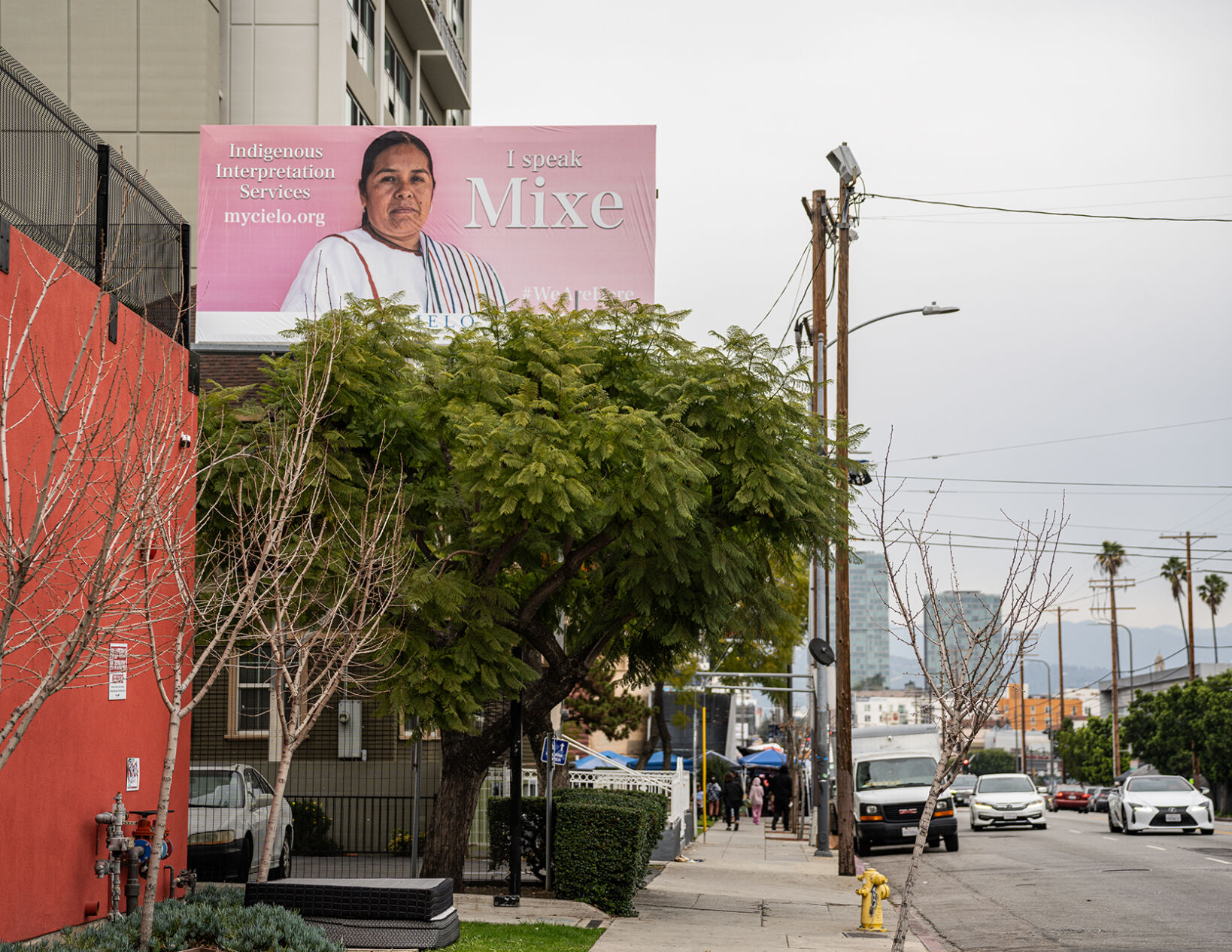
The initiative of the billboard campaign was prompted by the lack of data of indigenous people nationally and locally. Photo courtesy of CIELO
Something that prompted the initiative of the billboard campaign was the lack of data of indigenous people nationally and locally. “One of the challenges that we see most of the time is that there is a gap in knowledge of indigenous migrant communities in LA and all over the U.S., but that is further [exacerbated] by the lack of data. There's not a lot of data on indigenous communities,” Martinez said.
In 2022, CIELO and the University of California, Los Angeles (UCLA) published “We are Here: Indigenous Diaspora in Los Angeles,“ which collected and assembled data on indigenous immigrant people present in L.A., something that has historically been undercounted even in the Census.
The interactive map shows the indigenous language diversity of the city. After conducting surveys with nearly 2,500 unique households, CIELO contacted nearly 11,000 individuals from over 30 different Indigenous communities throughout Mexico and Central America who spoke 17 Indigenous languages in L.A.
Just over half of respondents indicated a language other than or in addition to Spanish or English as their preferred language. Those languages were: Zapoteco, Chinanteco, K’iche’, Ayuujk, Q’anjob’al, Mam, Nahuatl, Mixteco, Mayan, Akateko, Amuzgos, Kaqchikel, Purépecha, Zeltal, Tacuate, and Chontal.
Although the map cited that approximately 11,000 individuals are speaking Indigenous languages in L.A., experts say this number is expected to be much higher. “We know that there's more than that in numbers,“ Martinez said. “For us to really bring visibility to that gap in data, we really have to highlight that there is no database that actually tracks indigenous people or their migration patterns, and because of that, sometimes there are no resources allocated to certain communities.”
The eight people depicted on the billboards represent the top indigenous languages spoken in L.A., data that stemmed from the “We are Here” map.
“When we initially decided to do the billboard campaign, we based it on mapping and then from there, we looked at the community base that we work with here in Los Angeles, either through the food pantry or interpretation or through the other services that we provided. We asked them if they would be willing to participate in the billboard campaign,” Martinez said.
The billboards, which run through April 21, are expected to surpass one million daily views. CIELO hopes that when people look at the billboards, they feel included, or that they inspire inclusion and commitment to the betterment of Indigenous migrant communities in the city and around the world. “We want Indigenous people to see themselves reflected in these billboards as a celebration of their culture and language,” Martinez said.
The billboards are located in the following Los Angeles locations:
Crenshaw and Slauson
Figueroa and W Adams
Crenshaw and W Adams
Western and W 21st
Washington and Hobart
Vermont and Pico
Western and Pico
Wilshire and Harvard

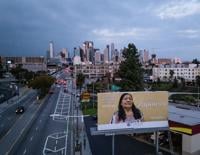


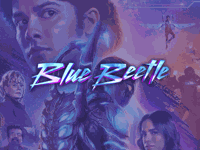

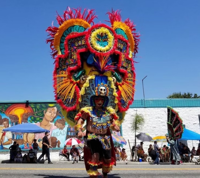

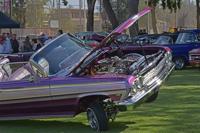

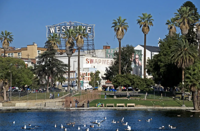
(0) comments
Welcome to the discussion.
Log In
Keep it Clean. Please avoid obscene, vulgar, lewd, racist or sexually-oriented language.
PLEASE TURN OFF YOUR CAPS LOCK.
Don't Threaten. Threats of harming another person will not be tolerated.
Be Truthful. Don't knowingly lie about anyone or anything.
Be Nice. No racism, sexism or any sort of -ism that is degrading to another person.
Be Proactive. Use the 'Report' link on each comment to let us know of abusive posts.
Share with Us. We'd love to hear eyewitness accounts, the history behind an article.